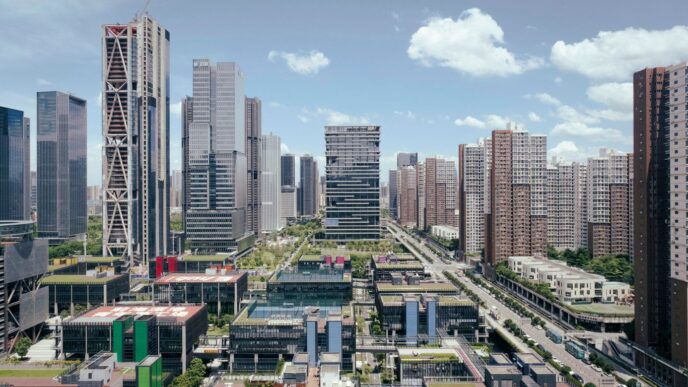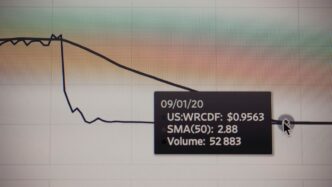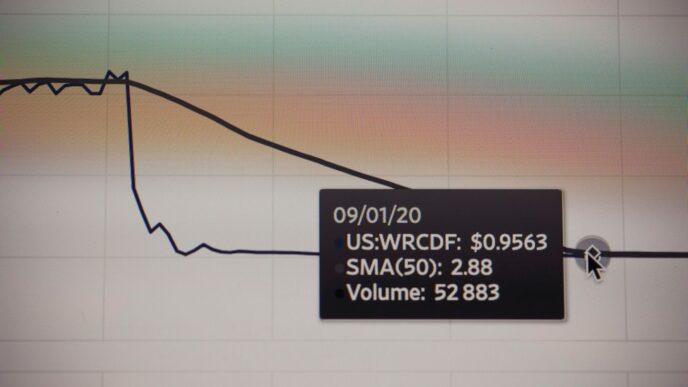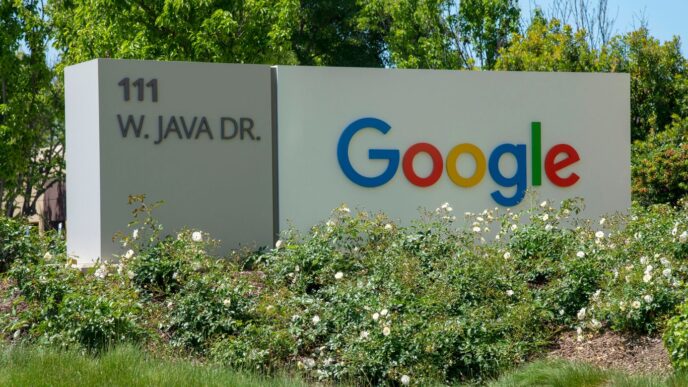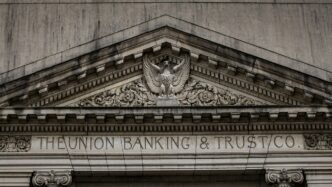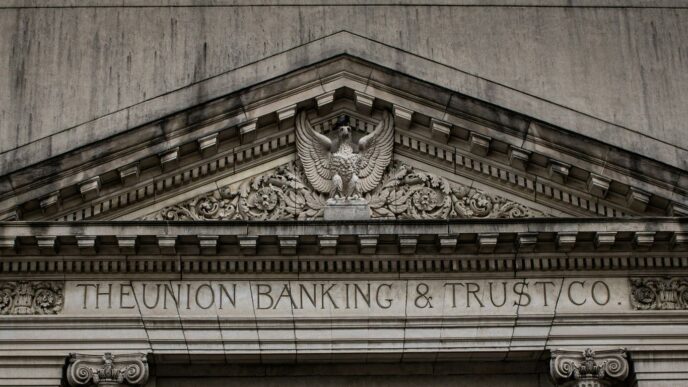SBA loan rates can feel like a maze, especially with all the changes happening in 2025. If you’re a small business owner, you might be wondering why rates are higher than last year, or what you need to do to get the best rate for your business. The truth is, SBA loan rates are shaped by a mix of government policy, economic trends, and your own financial history. This article breaks down what you need to know about SBA loan rates for 2025, without all the confusing jargon.
Key Takeaways
- SBA loan rates in 2025 are mostly based on the prime rate, which can change when the Federal Reserve adjusts its policies.
- There are two main SBA loans: 7(a) and 504, and each has its own way of setting interest rates and fees.
- Recent rule changes mean stricter loan requirements, so you’ll need to provide more detailed documents and meet higher credit standards.
- Fees can add to your total cost—these include guarantee, service, and CDC fees, but there are some waivers for small manufacturers.
- To get the best SBA loan rate, focus on improving your credit, organizing your finances, and working with lenders who know the SBA process.
How SBA Loan Rates Are Determined in 2025

Getting an SBA loan sounds great—until you have to figure out the interest rates. So, how exactly do these rates come together in 2025? It isn’t just a simple percentage pulled out of thin air. There are a bunch of things in play, and if you’re a small business owner, knowing what actually drives your rate can give you an edge.
Factors Affecting Variable and Fixed SBA Loan Rates
SBA loans come in two main flavors: variable and fixed rates. Here’s what shakes things up for each type:
- Loan Amount: Smaller loans tend to get higher interest rates than bigger ones, believe it or not.
- Loan Type: Different SBA programs—like 7(a) or 504—use their own formulas.
- Lender Markup: Banks and other lenders add a spread on top of the base rate. The SBA limits how much they can tack on.
- Loan Term: Shorter loan terms usually come with lower rates; stretch it out, and the rate creeps up.
- Borrower Profile: Your credit history, business finances, and collateral all matter a lot.
Let’s see a quick snapshot of how lenders figure out your fixed or variable rate:
| Factor | Effect on Rate |
|---|---|
| Loan Size | Smaller = Higher Rate |
| Loan Term | Longer = Higher Rate |
| Lender Margin | Negotiated, SBA capped |
| Credit Score | Higher = Lower Rate |
Impact of Federal Reserve Actions on Loan Rates
A big piece of the puzzle is what’s happening with the Federal Reserve. Any time the Fed raises or lowers its key benchmark rate:
- The primary rates offered by banks (prime rate) move up or down right away.
- SBA loan interest rates respond almost instantly because they’re tied to the prime rate.
- If the Fed fights inflation by hiking rates, SBA loan rates jump. If the Fed cuts rates to boost the economy, you might see a little relief on borrowing costs.
This was the case earlier in the year, when SBA loan rates dipped after the Fed cut rates for the first time in a while. You can see more about how outside forces play into business finance decisions by checking how registering for VAT or missing tax deadlines can throw a wrench in your plans.
Understanding the Role of the Prime Rate
The prime rate sits at the heart of all SBA loan rate talk in 2025. Here’s why it matters:
- Most banks set their lending rates a certain percentage above the prime.
- SBA variable-rate loans usually follow a formula like: Prime Rate + Lender Spread
- The SBA does set a limit on how high the lender’s spread can go, to stop rates from blowing up.
For reference, as of October 2025, the prime rate is around 7.25%. So, a typical SBA variable rate would look something like this:
| Loan Amount | Max Rate (Fixed) | Max Rate (Variable) |
|---|---|---|
| $25,000 or less | 15.25% | 13.75% |
| $25,001 – $50,000 | 14.25% | 13.25% |
| $50,001 – $250,000 | 13.25% | 13.25% |
| $250,001 or more | 12.25% | 10.25% |
So, keeping an eye on where the prime rate is headed will help you guess what your SBA loan rate might be if you apply now or hold off for a few months.
All these moving pieces add up, but remember: lenders can also review and reset your rate every couple of years—sometimes even on fixed-rate loans. Stay up to date and you’ll stand a better shot at not being caught off guard.
Comparing SBA 7(a) and 504 Loan Rates
Interest Rate Structures of 7(a) vs. 504 Loans
Sure, both loans come from the SBA, but the way rates are set up couldn’t be more different. The 7(a) loan usually comes with a variable rate based on the prime rate plus a lender markup, while the 504 loan offers long-term fixed rates linked to the 10-year U.S. Treasury.
Here’s a quick comparison:
| Loan Type | Rate Structure | Typical Range (2025) | Rate Based On |
|---|---|---|---|
| SBA 7(a) | Variable or Fixed | 10.25% – 15.25% | Prime Rate + Spread |
| SBA 504 | Fixed | 5% – 7% | 10-Year Treasury Rate + Fees |
You’ll notice that 504 loans are almost always more stable, with fewer surprises down the line (which is a big relief if you hate wild swings in monthly payments).
How Loan Amount and Term Affect Your Rate
- For 7(a) loans, larger loans tend to score lower interest rates. Borrowing $25,000 is usually pricier (interest-wise) than borrowing $500,000, for example.
- For 504 loans, your rate is more about when you lock it in, not the specific amount, since it’s directly set by the market’s Treasury note at the time of funding.
- Loan terms matter, too—longer terms in 504 often come with a slightly higher fixed rate, but the difference isn’t huge.
| Loan Size | 7(a) Max Rate (Fixed, 2025) | 504 Fixed Rate (Typical) |
|---|---|---|
| $25,000 or less | 15.25% | 5% – 7% |
| $250,001 or more | 12.25% | 5% – 7% |
Benefits and Drawbacks of Each SBA Loan Type
Here’s where a basic list helps sort things out:
SBA 7(a) Pros:
- More flexible—can be used for almost any business need
- Smaller loan amounts available
- Both fixed and variable options
SBA 7(a) Cons:
- Rates move up and down with the market (if variable)
- Extra fees, especially if you borrow more than $350,000
SBA 504 Pros:
- Stable, fixed interest for the life of your loan
- Lower rates if you’re buying real estate or equipment
- Higher possible loan amounts for specific green or small manufacturing projects
SBA 504 Cons:
- Must use toward fixed assets, not working capital
- Bigger down payment required (usually at least 10%)
- More paperwork and approval steps
In short, the choice depends on what you’re borrowing for—and how much you can handle payments changing over time. If you’re on the fence, talking to an SBA-approved lender (or just running some numbers in a spreadsheet) can make things a lot clearer.
Recent Changes to SBA Loan Rates and Lending Criteria
In 2025, the SBA has made a number of updates to how loans are priced and who qualifies. These changes reverse some of the more relaxed policies from recent years. For small business owners, that might mean jumping through a few extra hoops or double-checking eligibility before applying. Let’s break down what’s different this year.
Stricter Underwriting Standards for 2025 Loans
If you’re thinking those loan forms seem longer than last year, you’re not imagining it. Starting June 1, 2025, lenders must follow more traditional underwriting rules, ending the "Do What You Do" policy that let them use their own guidelines. Here’s what stands out:
- Required minimum Small Business Scoring Service (SBSS) score jumped from 155 to 165 for 7(a) small loans.
- All startups must now make a cash injection of at least 10% into their business.
- The Franchise Directory is back for eligibility checks.
- Lenders must verify tax transcripts and, for loans over $50,000, ensure borrowers have hazard insurance.
These steps are designed to cut down on risk after a spike in defaults and the $397 million deficit in the 7(a) loan program last year.
Reinstated Eligibility and Ownership Requirements
The SBA is now much more strict about who can own a business that qualifies for their 7(a) and 504 loans. As of March 7, 2025, your business must be entirely owned by U.S. citizens, nationals, or permanent residents (green card holders). Even a tiny ownership stake by someone who doesn’t meet these requirements, and you’re out of luck.
Here’s a list of who can’t qualify as an owner:
- Foreign nationals
- Visa holders
- People with asylum status, refugees
- DACA recipients
- Anyone undocumented
Lenders are also expected to:
- Gather info on at least 81% of owners in the SBA system.
- Certify that no owners are on the ineligible list.
- Collect documentation if any owners are green card holders.
- Get written statements from all owners confirming they meet criteria.
New Documentation and Application Expectations
With extra verification in place, business owners should be ready for a little more paperwork:
- Tax transcript verification: Required for all loans—no exceptions.
- Hazard insurance: Now needed for every loan over $50,000.
- Life insurance: Often required if your business relies on a key person (usually the owner).
- More detailed ownership reporting: Gets logged into SBA platforms for compliance.
Expect to spend more time gathering documents and checking everything twice before you apply.
| Requirement | Previous Standard | 2025 Standard |
|---|---|---|
| Minimum SBSS Score | 155 | 165 |
| Cash Injection (Startups) | Not always required | 10% minimum |
| Tax Transcript | Not always enforced | Mandatory for all loans |
| Ownership Eligibility | Up to 49% non-citizen | Must be 100% citizen/national/LPR |
| Hazard Insurance | Only some loans | Mandatory if over $50,000 |
So if you’re considering an SBA loan, set aside time for paperwork, maybe schedule a call with a lender, and don’t be surprised if they double-check everything. The goal: making sure these loans really get to small businesses that need them.
Understanding Fees Associated With SBA Loans
Alright, let’s talk about those pesky fees that come with SBA loans. You might think the government is trying to make things easy, but the reality is you’ll always pay more than just the interest. Getting a grip on these fees before signing is really important, so you know exactly what you’ll owe over the life of your loan.
Types of Fees: Guarantee, Service, and CDC Fees
Here are the most common fees you’ll find with SBA loans:
- Guarantee Fee: This covers the SBA’s risk if you default. It’s based on the portion of the loan backed by the SBA.
- Annual Service Fee: This is charged each year on the unpaid balance, basically to keep your loan active.
- CDC Fees (for 504 Loans): These include a fee paid to the CDC (Certified Development Company) that helps process and maintain your loan.
- Other Possible Fees: These might include things like a fee to a central servicing agent, closing costs, or legal fees—though the big three listed above are the ones you’ll see most often.
How Fees Vary by Loan Program and Amount
Not every SBA loan has the same fee structure. Here’s how it usually breaks down:
| Loan Program | Loan Amount | Upfront Guarantee Fee | Annual Service Fee |
|---|---|---|---|
| SBA 7(a) | $150,000 or less | 0% (no guarantee fee) | ~0.55% of guaranteed balance |
| SBA 7(a) | $150,001–$700,000 | 2.77–3% of guaranteed portion | ~0.49% |
| SBA 7(a) | $700,001–$5 million | 3.27–3.75% of guaranteed portion | ~0.49–0.55% |
| SBA 504 | All amounts | 0.5% (SBA), plus CDC/servicing fees | 1–2% (can vary by CDC) |
- For 504 loans, you’ll see more line items in the fee section, especially because of the CDC’s involvement and Treasury-based rates.
- Generally, the bigger the loan, the higher the upfront fee percentage, though small loans (under $150k) usually have the lowest—or zero—guarantee fees.
- The annual service fee is always calculated on whatever amount you still owe, so it drops as you pay off the loan.
Fee Waivers and Discounts for Small Manufacturers
There’s some good news if you’re a small manufacturer:
- SBA waives guarantee fees for 7(a) loans under $950,000 for qualifying manufacturers.
- For 504 loans, all SBA fees are waived for small manufacturers, regardless of loan amount.
Keep in mind, eligibility for these waivers usually depends on your business’s industry code (NAICS 31–33) and may require extra documentation.
Key Takeaways
- You’ll pay more than just interest: service, guarantee, and possibly CDC fees can add up.
- Fees vary a lot depending on the size and type of SBA loan.
- Manufacturers might catch a break this year—double check if you qualify for waived fees before you apply.
Bottom line: Always take a close look at the fee structure before moving forward with any SBA loan. These fees are often baked into your APR and can make your monthly payments higher than you expect.
How to Get the Best SBA Loan Rates for Your Business
Finding the best SBA loan rate isn’t just about luck—there are a few things you can actually do that make lenders more likely to offer a lower rate. A well-prepared application and a solid financial background can make a big difference. Lenders look closely at your business situation, past credit, and how risky it might be to lend to you. Let’s break down what really helps you snag the lowest rates for your small business.
Tips for Strengthening Your Application
Here’s what really matters when getting lenders to take your application seriously:
- Have a clear business plan with numbers to back it up.
- Organize your financials—tax returns, balance sheets, profit/loss statements—before you even start an application.
- Reduce current business debts (if possible) to show you’re not over-leveraged.
- Prepare a statement explaining how you’ll use the loan and how it’ll help your business grow.
Even if you’ve never borrowed before, lenders want to see that you’ve thought things through financially. Take your time and ask a mentor or your accountant to go over everything. For a look at how SBA loan rates stack up and what might work for you, see current SBA loan rates and terms.
Importance of Credit Score and Financial History
Your credit score is one thing that matters a lot. If it’s high—think 680 and above—it’s a green flag for most lenders. But it’s not the only thing they look at. Lenders also review:
- Your payment history on other loans or credit cards.
- Any bankruptcies, liens, or defaults.
- How much personal and business debt you already owe.
- Your bank statements for cash flow consistency.
A bump or dip in your credit score isn’t the end of the world, but the better your financial history, the more negotiating power you have when it comes to rates.
Working With SBA-Approved Lenders
SBA loans are a bit different than standard bank loans. Only certain lenders—ones officially approved by the SBA—can issue these loans. Here’s why working with SBA-approved lenders helps:
- They know the process and can walk you through what’s needed.
- They often have dedicated teams or specialists who handle nothing but SBA loans.
- They can give you a sense of what rate to expect based on your business profile.
To get started, search the SBA’s lender directory or ask for recommendations from business owners who’ve recently been through the process. Don’t be afraid to talk to several—just because one lender turns you down, doesn’t mean another won’t offer something better.
SBA Loan Rate-Influencing Factors Table
Here’s a quick table outlining what lenders usually check and how it can affect your SBA loan rate:
| Factor | Typical Impact on Rate |
|---|---|
| Personal credit score | Higher score = lower rate |
| Business cash flow | Strong = lower rate |
| Loan amount & term | Larger/longer = higher rate |
| Business age & stability | Older/stable = lower rate |
| Collateral | More collateral = lower rate |
Getting the best rate takes effort, but it’s doable. The main thing is to be prepared, be honest, and talk to the right people—your future self will thank you when those monthly loan payments are a little lighter.
SBA Loan Terms and Repayment Structures Explained
When you’re considering an SBA loan, the length, size, and structure of your agreement can really make a difference. It’s not just about the rates – how you pay the money back, and the fine print behind each kind of loan term, can seriously affect your plans. Here’s a closer look at what to expect with SBA loans in 2025.
Typical Loan Amounts and Terms for SBA Loans
Understanding how much you can borrow and how long you have to pay it back is key. The main loan types—the SBA 7(a) and the SBA 504—each have their own limits and standard time frames.
| Loan Program | Max Amount | Typical Term Length | Uses |
|---|---|---|---|
| SBA 7(a) | $5 million | 10 years (working capital), up to 25 years (real estate) | Working capital, equipment, debt refinance, real estate |
| SBA 504 | $5 million ($5.5m for certain projects) | 10, 20, or 25 years | Large equipment, land, buildings, renovations |
- SBA 7(a) loans let you borrow up to $5 million, and you’ll typically see terms up to 10 years, but longer (up to 25 years) if you’re using funds for real estate.
- SBA 504 loans are mostly for big projects, with structured terms at 10, 20, or 25 years, depending on what you’re buying and your agreement.
Fixed vs. Variable Repayment Plans
The type of rate you get with your SBA loan changes the repayment game quite a bit.
- Fixed rates mean your interest stays the same every month. That’s good for budgeting, though the initial rate may be higher.
- Variable rates are tied to the prime rate and may move up or down, depending on what the Federal Reserve does or how lenders adjust.
- Most 7(a) loans offer both fixed and variable rate options, while 504 loans typically use fixed rates for the CDC portion, but your bank’s part could be variable.
Pros and Cons at a Glance:
- Fixed:
- Predictable payments
- Safer during times of rising interest rates
- May start with a slightly higher interest rate than variable
- Variable:
- Possible lower initial rate
- Can get more expensive if rates go up
- Better if you plan to pay off early, before rates climb
Implications of Loan Renewals and Reviews
Something a lot of borrowers don’t consider: SBA loans (especially those with variable rates) are often reviewed every few years—you don’t just "set and forget" until the end of your term.
- Lenders can adjust rates at specified review periods, usually every 2, 3, or 5 years.
- If your financials have changed, or the prime rate has moved, your payments could rise or fall.
- Fixed rate loans are less exposed to this, but even then, some lenders may have renewal points where they check your status.
If your business is growing and improving, reviews aren’t all bad—they may even help you negotiate better terms down the line. But be prepared: if conditions worsen or rates jump, your monthly costs could too. That’s why understanding the full structure of your SBA loan is just as important as nailing down the rate.
Navigating the SBA Loan Application Process in 2025
Applying for an SBA loan in 2025 feels more complicated than it did just a couple of years ago. With all the changes in eligibility, paperwork, and program guidelines, getting through the process takes patience and preparation. I’ve broken down each part of the process to help you avoid surprises and keep things as smooth as possible.
Choosing the Right SBA Loan Program
Before you fill out any forms, you need to pick the loan program that fits your business goals and financial profile. Here are some quick comparisons:
| Loan Program | Typical Use Cases | Max Amount | Main Pros | Main Cons |
|---|---|---|---|---|
| SBA 7(a) | Working capital, equipment, startups, real estate | $5 million | Flexible use, available through many banks | Higher rates/fees than 504 for real estate |
| SBA 504 | Real estate, large equipment | $5.5 million | Low fixed rates for assets | Restricted uses, more paperwork |
Ask yourself:
- Do I need funds for day-to-day operations or to buy property?
- How much money do I need, and for how long?
- Am I prepared to meet stricter documentation and eligibility standards this year?
Preparing Required Financial and Ownership Documents
The SBA seriously stepped up documentation requirements for 2025, so collect these early:
- Last three years of business and personal tax returns
- Recent business financial statements (balance sheet, P&L)
- Proof of hazard and (for some) life insurance if loan is over $50,000
- Complete and detailed ownership structure, including identification and citizenship status for all owners
- Franchise agreements or SBA Franchise Directory proof, if applicable
- Copies of all business licenses and certifications
Tip: Double-check your ownership reports. Now, the SBA requires that all owners be U.S. citizens, nationals, or permanent residents—no exceptions.
Resources for Application Assistance
If you’re stuck or just want to make sure you do it right the first time, you’ve got options for help:
- SBA-approved lenders – These banks and credit unions are up to speed on the latest rules. They can talk you through the paperwork and eligibility.
- Small Business Development Centers (SBDCs) – Free help to review your application, financials, and business plan.
- SBA online tools – Plenty of guides and checklists on the official website, including the new SOP 50 10 8 updates.
- Mortgage brokers or loan packagers – For a fee, they’ll assemble and submit your entire loan package.
Some quick tips to remember for 2025:
- Expect more questions from lenders about your cash on hand. For new businesses, a 10% cash injection minimum is now required.
- Your citizenship/ownership status must be absolutely clear in your file—partial eligibility doesn’t count anymore.
- Tax transcript verification is now a must, not just a nice-to-have.
All this may sound like a hassle, but if you get your papers sorted early and work with the right folks, you can make it through the SBA loan maze without too many headaches.
Conclusion
So, that’s the scoop on SBA loan rates in 2025. The rules have gotten a bit tighter, and interest rates are still moving around, but SBA loans are still one of the better options out there for small business owners who need funding. It’s important to keep an eye on the latest rates and know what paperwork you’ll need before you apply. The process might feel a little more involved now, but with some planning and maybe a chat with a lender or advisor, you can still get the money your business needs. Just remember to read the fine print, ask questions, and don’t rush into anything. Getting the right loan can make a big difference for your business, so take your time and make sure it’s the right fit.
Frequently Asked Questions
What is the prime rate and how does it affect SBA loan rates?
The prime rate is the interest rate that banks use as a starting point for many loans, including SBA loans. When the prime rate goes up, SBA loan rates usually go up too. The Federal Reserve can change the prime rate to help control the economy, so it’s important to watch for any updates.
What are the main differences between SBA 7(a) and 504 loans?
SBA 7(a) loans are flexible and can be used for many business needs, like buying equipment or working capital. SBA 504 loans are mainly for buying big things, like land or buildings. The 7(a) loan has both fixed and variable rates, while the 504 loan usually has a fixed rate tied to government bonds.
What fees should I expect when getting an SBA loan?
SBA loans have several fees, such as guarantee fees, service fees, and sometimes CDC fees for 504 loans. The exact fees depend on the loan type and amount. For smaller loans, some fees may be waived, especially for manufacturers. Always ask your lender for a list of all fees before you agree to the loan.
How can I get the lowest SBA loan rate for my business?
To get the best rate, work on improving your credit score, keep your business finances in good shape, and have all your paperwork ready. Shopping around and working with SBA-approved lenders can also help you find better rates.
What changes did the SBA make to loan rules in 2025?
In 2025, the SBA made it harder to get a loan by bringing back strict rules for who can apply and what documents are needed. They now check ownership and financial details more closely, and you may need to provide more paperwork than before.
How long do I have to pay back an SBA loan, and can my payment plan change?
SBA loans can have different repayment times, from a few years to 25 years, depending on the loan type and what you use it for. Some loans have fixed payments, while others can change if interest rates go up or down. Sometimes, loans are reviewed after a few years, and your payment terms could change.








